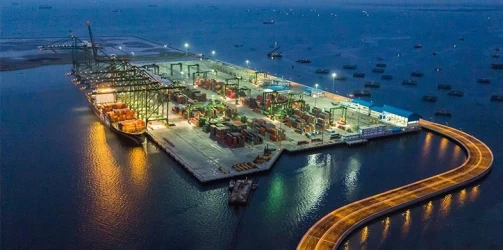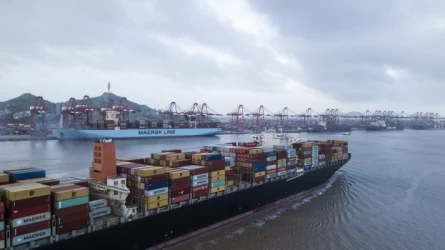Sea transportation of home appliances and furniture from Iran to Italy
International relocations require careful planning, especially when transporting household goods and furniture. For many moving from Iran to Italy, sea freight is an efficient and cost-effective option. This guide provides a detailed overview of the sea freight process for household items from Iran to Italy, covering everything from packing to customs, to help ensure a smooth and stress-free move.
1. Why Choose Sea Freight for Moving Household Goods?
- Cost Efficiency: Compared to air freight, sea freight is often more affordable for large shipments, especially for heavy or bulky items.
- Volume Capacity: Sea freight allows for the transportation of larger quantities of goods, making it suitable for moving an entire household.
- Reliability: Established routes between Iran and Italian ports ensure dependable transit times and shipping options.
2. Key Ports in Iran and Italy
- Iranian Ports: Bandar Abbas is the primary port used for international shipments, including household items.
- Italian Ports: Major Italian ports such as Genoa, Naples, and Livorno are common destinations for sea freight from Iran.
- Each port provides specialized services for handling household and personal goods, which are essential for ensuring safe delivery.
3. Shipping Methods for Household Goods
- Full Container Load (FCL): For larger shipments, FCL offers a private container, which is ideal if you are moving a substantial amount of furniture and personal items.
- Less than Container Load (LCL): If you are moving a smaller volume of goods, LCL allows you to share container space with other shipments, which reduces costs.
- Roll-on/Roll-off (RoRo): Although mostly used for vehicles, RoRo can be an option for some types of household goods and specialized equipment.
4. Packing and Preparing Your Goods for Shipment
- Packing Materials: Use high-quality packing materials such as bubble wrap, sturdy boxes, and protective padding to safeguard delicate items.
- Labeling: Label all boxes clearly and include a detailed inventory list for easy customs clearance and to keep track of your belongings.
- Furniture Disassembly: Where possible, disassemble large furniture pieces to save space and reduce the risk of damage.
- Insurance: Obtain shipping insurance for your goods to cover any potential losses or damages during transit.
5. Documentation Required for Sea Freight
- Packing List: A detailed list of all items being shipped, including descriptions and values, is essential for customs.
- Commercial Invoice: Although it’s a personal move, a commercial invoice detailing the estimated value of items may be required.
- Bill of Lading (BOL): This document serves as the receipt and contract for your shipment, and it is issued by the carrier.
- Import Permit: Italian customs may require specific import permits, depending on the nature and quantity of items being shipped.
6. Customs Procedures for Italy
- Customs Clearance: Italian customs authorities will inspect your shipment to ensure compliance with regulations. Having all necessary documents prepared will help avoid delays.
- Import Taxes and Duties: Italy may impose duties on certain items, depending on their type and value. Personal effects and used household goods may qualify for duty-free entry, but this depends on several factors, such as your residency status.
- Restricted Items: Familiarize yourself with Italy’s restricted and prohibited items list to avoid complications. Items like firearms, certain electronics, and cultural artifacts require special permissions.
7. Estimated Costs of Sea Freight from Iran to Italy
- Container Costs: A 20-foot container typically ranges from $1,000 to $2,000, depending on shipping season, demand, and specific carrier.
- Port and Handling Fees: Both Iranian and Italian ports charge fees for handling, loading, and unloading, which generally add another $200 to $500.
- Customs Clearance Fees: Customs clearance may cost between $100 and $300, varying with the complexity of the shipment.
8. Duration of Sea Freight from Iran to Italy
- Transit Times: Sea freight from Iran to Italy generally takes between 25 to 40 days, depending on the exact route, carrier schedules, and any delays at customs or ports.
- Planning Timeline: Start planning at least two to three months before your intended move date to account for preparation, packing, shipping, and clearance.
9. Selecting a Reliable Freight Forwarder
- Reputation: Look for companies with good reviews and expertise in handling personal effects and household goods.
- Services Offered: Opt for a company that offers end-to-end services, including packing, customs assistance, and delivery.
- Insurance Options: Ensure that the forwarder provides insurance options that cover all possible risks during sea freight.
Conclusion
Sea freight is an ideal choice for moving household goods and furniture from Iran to Italy due to its cost-effectiveness and capacity. By understanding the shipping options, documentation, customs procedures, and selecting a reliable freight forwarder, you can make your move seamless and secure. Proper preparation and planning will go a long way in ensuring your belongings arrive safely at your new home in Italy.
If you have any specific questions or need further assistance, feel free to ask!











